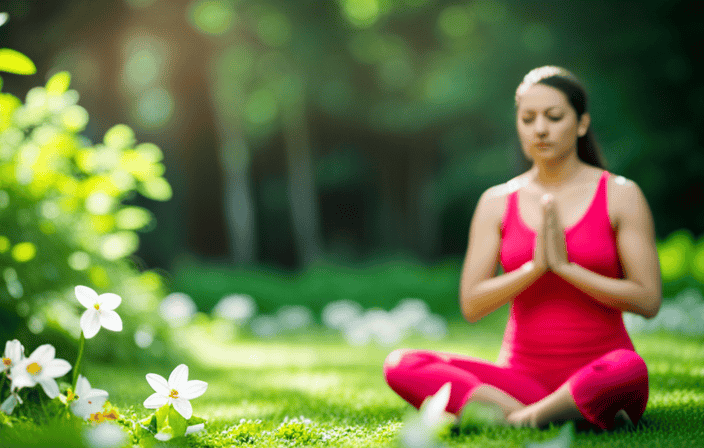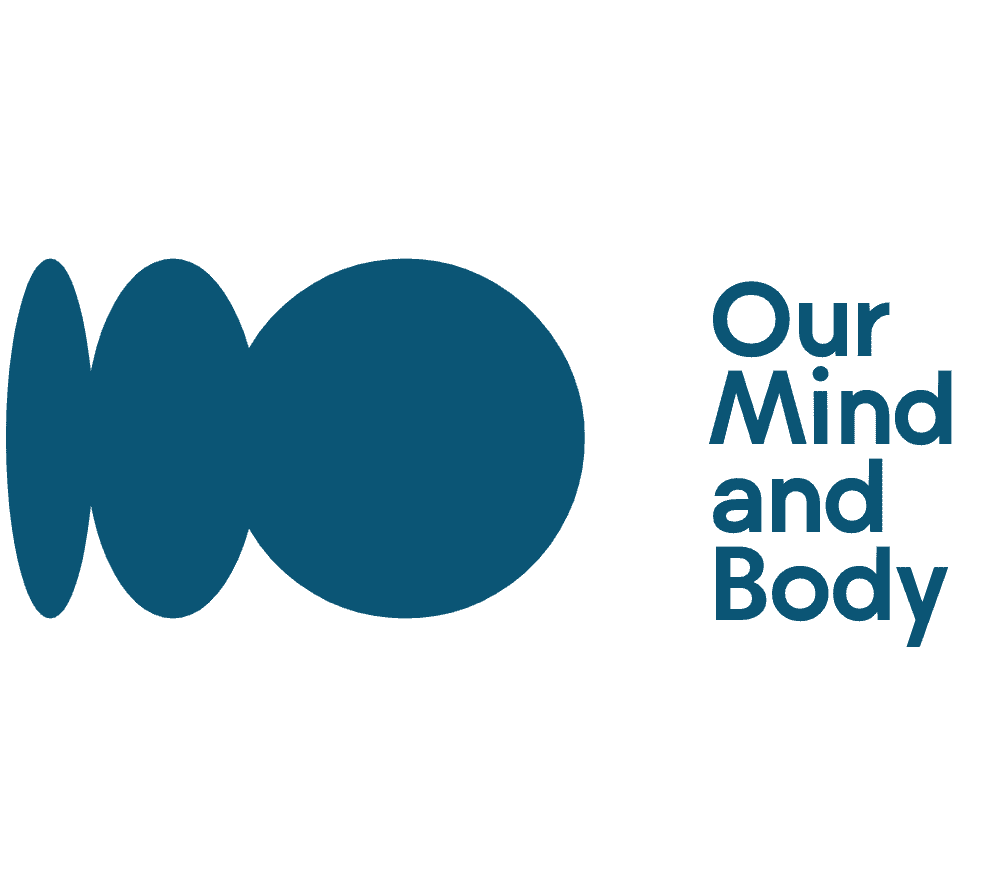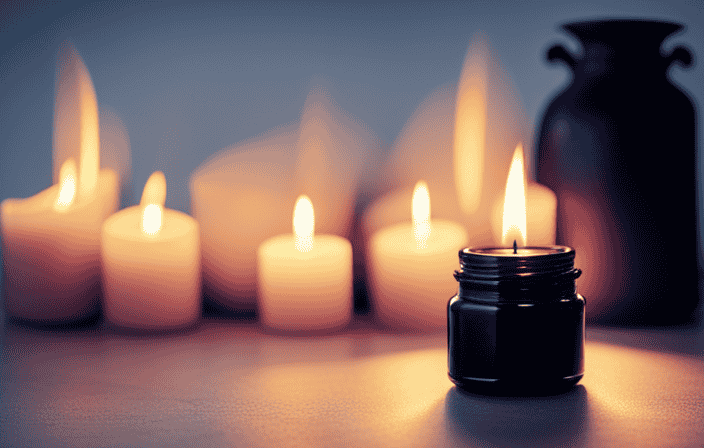Inspiration
Hard Truth – Everything Can Change In An Instant

Life is unpredictable and can change in an instant. Despite our desire for consistency, unexpected obstacles often arise, leaving us feeling overwhelmed and exposed. It can be especially difficult to accept this harsh truth when unforeseen events drastically impact our own lives or the lives of those close to us.
Yet, with time and effort, it is possible to navigate these changes while developing resilience along the way. In this article, we will explore how to accept the unexpected and make the most of life’s unpredictability by creating a plan for the future and taking time for self-care.
By learning to embrace this hard truth, we will find balance in life and discover ways of dealing with grief and loss while preparing ourselves for anything that may come our way.
Accepting the Unexpected
Unforeseen circumstances can rapidly alter the course of life, necessitating a preparedness to confront the unexpected. Embracing uncertainty and facing fears is key in allowing individuals to become more resilient when faced with sudden change. The ability to accept that life can be unpredictable allows for greater mental preparation for potential challenging situations. By understanding this truth, people are better equipped to manage their reactions and create more positive outcomes from difficult experiences.
Developing an attitude of flexibility helps us to understand that any situation has the possibility of transformation; being open-minded enables us to navigate different paths without becoming overwhelmed by fear or anxiety. Acknowledging this reality also grants us permission to take risks and explore diverse opportunities that may arise out of life’s unpredictability, thus leading us closer towards personal growth and fulfillment.
Transitioning into the next section, it is important to recognize how understanding life’s unpredictability plays a significant role in our overall success and well-being.
Understanding Life’s Unpredictability
Unexpected life events are commonplace, with a recent survey indicating that over two-thirds of respondents experienced a significant disruption to their daily lives in the past year.
To understand the unpredictability of life, it is important to remember that:
- Adapting quickly and staying flexible are essential when embracing uncertainty.
- Anticipating the unexpected requires being prepared for anything at any time.
- Having an open mind and perspective can lead to creative solutions.
- Resilience is key when navigating sudden changes.
- Remaining positive and optimistic can help maintain emotional balance during times of stress.
The ability to accept change as a natural part of life and roll with the punches will ultimately give us greater freedom from worry and stress in the long run.
By allowing ourselves to stay present in moments of transition, we can gain clarity on what steps need to be taken next—and have faith that every situation has its purpose in contributing towards our overall growth and development.
We also must remember that no matter how much planning goes into our lives, there will always be elements which lie beyond our control; it is then up to us how we respond that will determine how well we face them head on or turn them into opportunities for learning and personal growth.
Ultimately, understanding life’s unpredictability means finding comfort in knowing that whatever comes our way can be managed by taking proactive measures while remaining open minded about potential outcomes along the way.
Transitioning into this mindset allows us to make peace with whatever happens next, giving us an opportunity for genuine self discovery no matter where life takes us down the road.
Being Prepared for Anything
Staying alert and prepared for any situation is an integral part of understanding life’s unpredictable nature. Unexpected events can occur at any moment, making it essential for individuals to be ready to adapt quickly and embrace the changes that come with them. This means that one should always be on their toes, not taking anything for granted and having a plan B in case of unforeseen circumstances.
Having a positive outlook when faced with potential danger or adversity is also necessary in order to make the most out of unexpected events. It is important to remain open-minded when approaching unknown situations as this allows for more creative solutions and better problem solving skills. It also helps to stay organized since being able to assess the situation clearly can mean the difference between success and failure when dealing with hiccups along the way.
Additionally, having a support system is vital in order to navigate through difficult times without feeling overwhelmed or discouraged by setbacks. Having the right attitude towards uncertainty is key as it ensures greater resilience during tumultuous moments. Keeping a cool head despite chaos enables people to think rationally and respond effectively, creating opportunities from challenging situations instead of letting them become debilitating obstacles along life’s journey.
With these strategies in mind, one can approach life’s curveballs with confidence and grace, making the most out of unexpected events rather than letting them bring them down.
Making the Most of Unexpected Events
Navigating through the unpredictable can be like a game of chess, requiring strategy and adeptness to make the most of unexpected events. As life often throws curveballs, it is important to have an open-mind and flexibility when dealing with change. Embracing uncertainty and adapting quickly to new circumstances can help us find solutions that we may not have considered before.
To effectively manage sudden transitions, it is essential to focus on the present moment and maintain a positive attitude regardless of what has come before. This requires an acceptance that things can change in an instant, allowing us to move forward without getting stuck in fear or regret. By recognizing these hard truths, we will be better equipped to handle whatever comes our way while still making the most of every opportunity that comes our way. With this approach, we will be prepared for anything that may arise as we continue working towards our goals and dreams.
Transitioning into the next section about working through grief and loss, it is important to remember that even though difficult times can seem overwhelming, there is always hope for tomorrow.
Working through Grief and Loss
Grief and loss can be incredibly difficult to process and manage, yet there are ways to work through these experiences in a healthy and meaningful manner.
Navigating change is one of the most important components of managing grief and loss. It is essential to recognize that life will never be the same after an unexpected event, but with patience, care, and support it is possible to learn how to cope with this new reality.
Embracing uncertainty can also help individuals work through their grief as it allows for space for them to explore different possibilities for their future. Finding acceptance that things have changed offers some degree of comfort during this period of transition which can help ease the pain associated with such events.
It is also important to remember that it takes time for healing and growth, as well as understanding that everyone’s experience with grief will vary depending on their own unique circumstances. There are many helpful resources available ranging from therapy sessions to online support groups which can provide crucial guidance along the journey towards recovery.
Finding strength in difficult situations involves recognizing our own inner resilience and recognizing the power of connecting with others who may have shared similar experiences. Although we may feel alone at times when dealing with grief or loss, building relationships based on trust, compassion and respect can provide us comfort in knowing we are not alone in navigating these challenges.
Reaching out for help from family members or friends is also an important step in finding strength during these times as they often offer much needed reassurance while allowing us to express our feelings more freely than we could by ourselves. Additionally engaging in activities like meditation or yoga may help bring a sense of peace during moments when sadness overwhelms us or fear takes over our mindsets.
As hard as it may seem at first, taking small steps towards healing can eventually lead us toward a path where we find stability even amidst uncertain times.
No matter what form grief or loss comes in, having access to mental health resources is key for long term wellbeing following such events. It’s vital that individuals prioritize self-care practices such as getting enough restful sleep each night, eating nutritious meals regularly throughout the day, engaging in physical activity like walking or yoga whenever possible, journaling about thoughts/feelings if desired etc., so they can continue navigating life without feeling overwhelmed by emotions caused by unexpected changes occurring around them.
With proper care it’s easier said than done but eventually progress happens slowly until eventually hope starts outweighing fear once again allowing people impacted by tragedy start seeing light beyond darkness once again.
Finding Strength in Difficult Situations
Finding strength in difficult situations requires recognizing and cultivating resilience while connecting with others who have gone through similar experiences. It can be helpful to develop coping strategies that foster peace of mind and bring a sense of acceptance. Such strategies may include:
-
Taking time for self-care: This could involve activities like yoga, journaling, or simply taking some alone time to relax and reflect on the situation.
-
Connecting with supportive people: Reaching out to friends and family members who are understanding can help provide comfort during tough times.
-
Seeking professional help: Speaking to a therapist or counselor can be beneficial for gaining insights into the situation and developing more effective ways of coping.
Having an open dialogue about grief and loss is important for finding strength in difficult moments. Sharing stories with those who have experienced similar events can create a sense of connection which helps reduce feelings of isolation.
While it is normal to feel overwhelmed by life’s hardships, it is also possible to find moments of peace within them. By recognizing our own capacity for resilience, we are better able to embrace the process of healing while creating a plan for moving forward into the future.
Creating a Plan for the Future
Having a plan for the future can be an effective way to move forward with life, despite difficult times. Taking the time to create a plan involves thinking ahead and preparing for any potential obstacles or eventualities. This includes making financial plans that provide security during uncertain times. To take this one step further, it is also important to consider other aspects of life, such as health and relationships, in order to make sure that all bases are covered.
Planning ahead provides peace of mind and allows individuals to have more control over their lives by being able to anticipate what may come next. It is equally crucial not only to think about the present but also consider how best to prepare for the future. Financial planning is necessary in order to ensure financial security when facing unexpected expenses or changes in income. Additionally, creating an emergency fund can help minimize stress associated with any sudden changes or crises that could potentially arise down the line.
Furthermore, having long-term goals encourages individuals to stay focused and motivated in achieving them no matter what life throws at them along the way. Taking these steps towards planning for an unpredictable future helps build resilience so that when hard situations arise, individuals feel better equipped and less overwhelmed from dealing with them head on. Having a plan allows people some sense of control over their lives even when everything around them seems out of control – giving them hope in times of difficulty and allowing them look forward towards brighter days ahead without fear or anxiety holding them back.
With this newfound strength and focus on their goals, they can start taking steps towards creating a better future for themselves while still learning valuable lessons from each experience along the way. Moving forward with resilience will allow individuals achieve success despite any difficulties they may face going forward.
Developing Resilience
Developing resilience helps individuals to adapt to difficult situations and face them with strength and focus. Acquiring the ability to quickly adapt in a rapidly changing environment is essential for any individual who wishes to reach their goals while facing life’s challenges. Those who are resilient have the capacity to embrace uncertainty without fear, relying on their experience and wisdom as they progress through different stages of life.
Understanding that change is inevitable helps build up resilience since it allows individuals to accept what cannot be controlled, instead of wasting energy trying in vain to manipulate the situation. By accepting this hard truth, people can focus their energy on finding balance in life, helping them better understand themselves and their surroundings. Finding balance encompasses physical, emotional, mental and spiritual elements which play a vital role in building mental fortitude against sudden changes; by taking care of each area simultaneously, one can ensure that they are ready for anything that comes their way.
Finding Balance in Life
Accurately assessing the various components of one’s life can help to create a framework from which balance may be achieved. In order to achieve a sense of equilibrium, it is important to understand the impact that change and uncertainty have on one’s mental and emotional state.
Navigating change often involves understanding how our own individual values are affected by shifts in our environment, while embracing uncertainty means accepting that certain aspects of life may remain beyond our control. By cultivating an awareness of these factors, an individual can begin to develop strategies for finding harmony in life.
One such strategy includes taking time for self-care. This could involve anything from exercise or relaxation activities, to engaging in hobbies or making plans for the future. Taking a step back from day-to-day responsibilities can help bring perspective on what is truly important and provide a chance to make positive changes in one’s attitude towards life overall.
Additionally, engaging with supportive friends and family members or seeking professional advice can provide additional resources for finding balance amidst external stressors outside of one’s immediate control. Finally, having effective problem solving skills can be instrumental when attempting to manage difficult situations without compromising your personal wellbeing or sacrificing your values.
Being able to identify healthy avenues for resolving issues allows us to approach challenges with confidence and courage rather than fear and doubt; thereby allowing us find peace amid chaos and cultivate resilience in times of hardship. Taking into account these various elements when striving towards balance will allow individuals to proceed through the turbulence of life with greater assurance that they will reach their desired destination eventually. Moving forward into the next section about taking time for self-care…
Taking Time for Self-Care
Making time for self-care is akin to planting a garden of serenity, in which one can cultivate the peace and tranquility that often eludes us during times of uncertainty and upheaval. Stress management and self reflection are two key components to successful self-care practices.
Taking time out each day to focus on yourself can help reduce stress levels, improve mental clarity, and increase productivity. Making an effort to prioritize self-care activities such as exercising, reading, meditating or engaging in creative pursuits can have a profound effect on both physical and mental health.
Developing healthy habits that promote relaxation and mindfulness helps create balance in life by allowing one to focus on their needs before tending to those of others. Additionally, it allows for more effective problem solving when difficult situations arise as the individual has already taken steps towards improving their overall wellbeing.
Self-care should be treated as an essential part of everyday life rather than something that is reserved only for special occasions or when feeling unwell. The ability to take control over one’s own wellbeing is empowering and provides a sense of security even during moments of turmoil or distress.
When practiced regularly, self-care offers numerous benefits including improved moods, increased energy levels, better sleep patterns, improved concentration and enhanced creativity among other things. It serves as a reminder that we are ultimately responsible for our own happiness and wellbeing no matter what life throws at us.
Frequently Asked Questions
How can I keep a positive outlook when facing difficult life changes?
The ability to maintain a positive outlook when facing difficult life changes is an important skill to cultivate. By staying strong and adapting quickly, we can leverage our resilience to better cope with such changes.
Developing the capacity for self-reflection and awareness can be beneficial in this process. This includes taking time to consider how such changes will affect us both emotionally and mentally, as well as making sure that we are adequately supported by our family, friends, and community.
Practicing mindfulness meditation can also be useful in helping us gain greater clarity of thought during times of transition.
Ultimately, learning to remain optimistic despite significant change is key for navigating the path ahead successfully.
What is the best way to stay organized and prepared for unexpected events?
The best way to stay organized and prepared for the unexpected is to set boundaries, build habits, and create a sense of order. Establishing regular routines can help minimize the chaos that often comes with life changes; this could include making lists of tasks that need to be accomplished, setting reminders and deadlines, or simply taking time each day to plan out the week’s goals.
Additionally, it is beneficial to take some time for self-care during times of crisis; this can provide an outlet for stress and allow one to have clarity when making decisions. Taking the initiative to find solutions before problems arise may also prove helpful in staying on top of any surprises that come your way.
By maintaining control over our lives through organization and preparation we are better equipped to handle whatever life has in store.
How can I help my family and friends cope during times of grief and loss?
Supporting loved ones during times of grief and loss can be an emotionally difficult task. Effective communication strategies are essential for providing meaningful assistance to those in need.
Tactics such as:
- Active listening
- Open-ended questions
- Offering support rather than advice
- Expressing empathy without judgement
- Avoiding platitudes
can help family and friends cope with the situation at hand. Additionally, creating a safe space for emotions to be expressed freely is key for helping individuals navigate through the grieving process.
How can I use difficult experiences to grow and develop resilience?
The capacity to psychologically and emotionally recover from traumatic events is the essence of mental strength; yet, it is only through engaging with difficult experiences that individuals can develop resiliency.
Coping strategies, such as self-reflection, journaling, and talking to supportive people are powerful tools for learning how to make progress in the face of adversity.
By understanding our own emotional responses and how we can take steps forward without allowing grief and loss to define us, we are able to grow more resilient over time.
What are the best ways to take time for self-care when life is chaotic?
Mindful meditation and emotional support are two important strategies for self-care when life is chaotic.
Mindful meditation can help to create a sense of calm and relaxation, allowing individuals to be present in the moment and take a break from their hectic lives.
Emotional support can be gained from talking with friends and family, or from seeking out professional counseling if necessary.
Both methods of self-care can ultimately provide individuals with an outlet for stress relief so they may better cope with the demands of life’s chaos.
Conclusion
Though life can often feel chaotic and out of control, it is possible to find balance in the midst of unexpected change.
Taking time for self-care is an important step in developing resilience and making the most of difficult situations.
Additionally, having a plan in place can help one navigate the uncertainty that comes with life’s unpredictability.
Such strategies make it possible to cope with grief and loss, while also looking ahead to a brighter future.
Ultimately, accepting the fact that everything can change at any moment is key to navigating life’s uncertainties.
Meet Kalinda, the passionate and visionary Editor-in-Chief of OurMindAndBody.com. Kalinda is a beacon of light in the realm of holistic well-being, and her mission is to positively impact the lives of others by inspiring them to embrace a healthier and more fulfilling lifestyle.
With a deep-rooted love for meditation, yoga, and spirituality, Kalinda’s journey toward self-discovery and personal growth started at a young age. She found solace and strength in these practices, which not only helped her cope with the challenges of life but also provided her with a profound sense of purpose. Eager to share the transformative power of these ancient disciplines, Kalinda embarked on a path to spread awareness and understanding.
Inspiration
Unveiling The Depths Of Spiritual Warfare

Spiritual warfare is a complex battle with various challenges and strategies at different levels. Essentially, this battle is against evil forces led by Satan, whose aim is to shake our faith and hinder our relationship with God.
In this article, we will delve into the depths of spiritual warfare, exploring the various levels of attack, strategies to overcome the devil, and effective ways to fight against spiritual attacks.
By understanding the nature of this battle and equipping ourselves with the right tools, we can navigate this spiritual warfare and align ourselves with God’s will.
Key Takeaways
- Spiritual warfare involves battling against Satan’s forces and can consume individuals who are not properly aligned with God’s purposes.
- There are three levels of spiritual warfare: flesh, devil, and worldly powers, with the highest level being level 3.
- The devil seeks to deceive, tempt, and destroy, but believers can overcome him through prayer, fasting, scripture reading, and maintaining a personal relationship with God.
- Effective strategies to combat the devil and engage in spiritual warfare include establishing a relationship with God through communication and obedience, engaging in activities that please God, and surrounding oneself with positive influences such as uplifting music and spiritual fellowship.
Levels of Spiritual Warfare
I think it’s important to understand the levels of spiritual warfare in order to effectively combat these battles. By recognizing spiritual attacks, we can better equip ourselves to fight back.
The levels of spiritual warfare include the flesh, devil, and worldly powers. The flesh level involves tangible battles that we face in our physical bodies and circumstances. The devil level focuses on the external enemy, Satan, who seeks to deceive and destroy. Lastly, the worldly powers level encompasses attacks on our faith and belief systems by societal influences.
Spiritual armor plays a crucial role in defending against these attacks. To combat these battles, we must arm ourselves with prayer, faith, and the word of God.
By staying vigilant and aware of the different levels of spiritual warfare, we can effectively overcome and align ourselves with God’s will.
Strategies Against the Devil
Establishing a personal relationship with God through communication and obedience can be a powerful strategy to overcome the devil’s temptations and deceptions.
In the midst of spiritual warfare, it is crucial to equip ourselves with spiritual armor to withstand the attacks of the devil.
Prayer, in particular, is a potent weapon that allows us to communicate with God and seek His guidance and strength.
Through prayer, we can overcome the devil’s attempts to deceive and tempt us, as we draw closer to God and align ourselves with His will.
Prayer not only strengthens our relationship with God but also empowers us to resist the devil’s influence.
By regularly engaging in open and honest communication with God, we can equip ourselves with the spiritual armor necessary to overcome the devil’s attacks and stand firm in our faith.
Overcoming Spiritual Attacks
To overcome spiritual attacks, it is important to recognize the signs and seek guidance and strength from God.
Spiritual warfare can manifest in various ways, including behavior changes and unexplained physical symptoms. By being aware of these signs, we can identify when we are under attack and take appropriate action.
Defending against spiritual attacks involves establishing a strong relationship with God through prayer, fasting, and studying the Bible. These practices help us to stay connected to God’s power and truth, enabling us to resist the enemy’s influence.
Additionally, surrounding ourselves with positive influences such as uplifting music and spiritual fellowship can provide protection and support.
It is crucial to remember that spiritual attacks are not limited to believers; non-believers can also be targeted. By recognizing spiritual warfare and actively defending against it, we can overcome evil and align ourselves with God’s will.
Frequently Asked Questions
How can I differentiate between a spiritual attack and a normal life struggle?
Understanding spiritual discernment is crucial in differentiating between a spiritual attack and a normal life struggle. Recognizing signs of spiritual attacks, such as sudden behavior changes or unexplained physical symptoms, can help discern the source of the struggle.
Can spiritual warfare affect my physical health?
Yes, spiritual warfare can have a mental and emotional impact which can in turn affect physical health. However, through engaging in spiritual warfare, healing can occur on all levels, including physical well-being.
Is it possible to unknowingly invite spiritual attacks into my life?
Yes, it is possible to unknowingly invite spiritual attacks into my life. Recognizing spiritual attacks involves being aware of signs such as behavior changes and unexplained physical symptoms. It is important to protect oneself through prayer and positive influences.
Are there specific prayers or rituals that can protect me from spiritual attacks?
Prayer techniques and spiritual cleansing practices can provide protection from spiritual attacks. By seeking God’s guidance, regularly praying, and engaging in rituals such as smudging or anointing, I can create a spiritual shield against negative forces.
Can spiritual warfare affect my relationships with other people?
Spiritual warfare can impact my relationships by affecting my emotional well-being. Forgiveness plays a crucial role, as it allows for healing and restoration. It is important to address the spiritual battles within ourselves to maintain healthy connections with others.
Conclusion
In conclusion, spiritual warfare is a complex battle that occurs on multiple levels. It involves attacks on faith and belief systems, with the ultimate goal of undermining humanity’s relationship with God. This battle includes the flesh, the devil, and worldly powers.
However, individuals can overcome the devil’s tactics by establishing a personal relationship with God and engaging in spiritual practices. These practices include prayer, fasting, and studying the Bible.
Some may argue that spiritual warfare is subjective and lacks tangible evidence. However, it is important to remember that the battle against evil is not always visible. Its effects can be felt through behavior changes and unexplained physical symptoms.
To effectively fight against spiritual attacks, individuals must actively seek God’s guidance and surround themselves with positive influences. By doing so, they can align themselves with God’s will and overcome the challenges of spiritual warfare.
Meet Kalinda, the passionate and visionary Editor-in-Chief of OurMindAndBody.com. Kalinda is a beacon of light in the realm of holistic well-being, and her mission is to positively impact the lives of others by inspiring them to embrace a healthier and more fulfilling lifestyle.
With a deep-rooted love for meditation, yoga, and spirituality, Kalinda’s journey toward self-discovery and personal growth started at a young age. She found solace and strength in these practices, which not only helped her cope with the challenges of life but also provided her with a profound sense of purpose. Eager to share the transformative power of these ancient disciplines, Kalinda embarked on a path to spread awareness and understanding.
Inspiration
The Mighty Gamabunta: Jiraiya’s Spiritual Beast

In the Naruto series, Gamabunta is known as Jiraiya’s legendary mystical creature and spiritual companion, showing impressive strength. With his ability to change shape, summon smaller toads, and utilize natural energy, Gamabunta proves to be a valuable ally to Jiraiya.
Together, they form an unstoppable team, communicating telepathically and coordinating their attacks in battle.
In this article, we will delve into the description, abilities, various names, and the first appearance of the mighty Gamabunta, shedding light on his significance in the Naruto universe.
Key Takeaways
- Gamabunta is Jiraiya’s mystical animal companion, a giant toad from Mount Myoboku.
- Gamabunta provides strategic support in combat, including transportation and close-range combat.
- Gamabunta has unique abilities such as shape-shifting, summoning smaller toads, and absorbing natural energy.
- The most commonly accepted name for Jiraiya’s spiritual beast is Gamabunta.
Description and Abilities
Gamabunta, Jiraiya’s spiritual beast, is a giant toad with incredible abilities. These abilities include shape-shifting, summoning smaller toads, and absorbing natural energy. Gamabunta plays a crucial role in Jiraiya’s training and development as a shinobi.
With Gamabunta’s strategic support and formidable combat skills, Jiraiya is able to enhance his combat capabilities and transportation. The strong bond between Jiraiya and Gamabunta is evident in their telepathic communication, which increases coordination and effectiveness in battle.
Furthermore, Gamabunta’s significance extends beyond Jiraiya to Naruto. As a summoning animal for both Jiraiya and Naruto, Gamabunta has a profound impact on their growth as shinobi. Through their encounters and battles together, Gamabunta provides guidance and support to Naruto, helping him develop his skills and overcome challenges.
This relationship between Naruto and Gamabunta showcases the importance of mentorship and the influence of spiritual beasts in the Naruto universe.
Various Names
Toad Boss, also known as the Great Toad Sage, is a prominent character in the Naruto series and serves as my loyal companion throughout my journeys.
Gamabunta holds great cultural significance in Japanese folklore, as it is based on the mythical creature known as the toad.
In the Naruto universe, Gamabunta plays a crucial role in shaping my character development. As a summoning animal, Gamabunta’s immense power and wisdom have guided me through countless battles and taught me important life lessons.
Our telepathic communication enhances our coordination, allowing us to strategize effectively in combat.
Gamabunta’s presence also showcases my growth and maturity as a ninja, as I gain the respect and trust of such a formidable and revered beast.
Together, we have faced many challenges, and our bond continues to strengthen as we overcome obstacles and protect the ninja world.
Summoning and First Appearance
Summoning my loyal companion was a pivotal moment in my battle against Orochimaru. An incredible force emerged to aid me – the Summoning Technique, a jutsu I had mastered. It allowed me to summon Gamabunta, the mighty toad, to the battlefield.
As he appeared in a swirl of smoke, Gamabunta’s massive size and power commanded attention. His first appearance showcased his formidable abilities. He unleashed a devastating Giant Toad Body Slam, crushing our enemies with his sheer strength.
With Gamabunta by my side, I felt invincible. His impressive water-style jutsu and unrivaled combat skills were at my disposal. The significance of Gamabunta’s first appearance in Naruto cannot be understated. It marked the beginning of a partnership that would prove crucial in numerous battles to come.
Frequently Asked Questions
How did Jiraiya first form a bond with Gamabunta?
Jiraiya formed a bond with Gamabunta through the Summoning Technique, where he summoned the giant toad to aid him in battle. Their bond is significant as Gamabunta provides strategic support and can understand human language, allowing for better coordination with other summoning animals.
Can Gamabunta communicate with other animals besides Jiraiya?
No, Gamabunta cannot communicate with other animals besides Jiraiya. His ability to communicate only extends to telepathic communication with Jiraiya, which enhances their coordination in battle but does not involve other animals.
What is the origin of Gamabunta’s name?
The name Gamabunta holds significant meaning in Japanese folklore. It symbolizes the connection between Jiraiya’s ninja techniques and the wisdom of the toad sage. Gamabunta also acts as a mentor and protector for Jiraiya, guiding him in his early days as a ninja.
Are there any other summoning animals that Jiraiya can call upon besides Gamabunta and Gamakichi?
No, there are no other summoning animals that Jiraiya can call upon besides Gamabunta and Gamakichi. Jiraiya’s summoning technique is unique and powerful, placing him among the top summoners in the Naruto series.
Has Gamabunta ever been defeated in battle?
In the world of Naruto, Gamabunta is a force to be reckoned with. Compared to other summoning animals, he is incredibly powerful. However, he does have his weaknesses. While he can defeat many spiritual beasts in battle, he is primarily limited to fighting alongside Jiraiya.
Conclusion
In conclusion, Gamabunta is a formidable and powerful ally to Jiraiya in the Naruto series. With his shape-shifting abilities, summoning smaller toads, and absorbing natural energy, Gamabunta proves to be a formidable force in combat.
His telepathic communication with Jiraiya enhances their coordination and makes them a nearly invincible duo. Known by various names such as Toad Boss and Great Toad Sage, Gamabunta is considered one of the strongest summoning animals in the Naruto universe.
An interesting statistic to note is that Gamabunta made his first appearance during the battle against Orochimaru using the Summoning Technique, showcasing his significance in Jiraiya’s journey.
Meet Kalinda, the passionate and visionary Editor-in-Chief of OurMindAndBody.com. Kalinda is a beacon of light in the realm of holistic well-being, and her mission is to positively impact the lives of others by inspiring them to embrace a healthier and more fulfilling lifestyle.
With a deep-rooted love for meditation, yoga, and spirituality, Kalinda’s journey toward self-discovery and personal growth started at a young age. She found solace and strength in these practices, which not only helped her cope with the challenges of life but also provided her with a profound sense of purpose. Eager to share the transformative power of these ancient disciplines, Kalinda embarked on a path to spread awareness and understanding.
Inspiration
Unveiling Pastor Jerry Eze’s Spiritual Father: A Catalyst For Growth

In the realm of spiritual growth and progress, the revelation of Pastor Jerry Eze’s mentor marks a pivotal moment in his journey.
This divine connection with Pastor Enoch Adeboye, a respected and revered figure, has become a cornerstone of Pastor Eze’s development.
Their relationship is a testament to the power of seeking guidance, honor, and mentorship in ministry.
As we delve into their profound bond, we will witness the transformative impact that a spiritual father can have on one’s ministry, vision, and spiritual walk.
Key Takeaways
- Pastor Jerry Eze’s spiritual father has had a cordial and healthy relationship with him, providing mutual respect and guidance that has influenced Pastor Jerry Eze’s ministry.
- Seeking guidance and mentorship in ministry is essential, as demonstrated by Pastor Jerry Eze’s own example, and can have a positive impact on one’s spiritual journey and ministry.
- Pastor Jerry Eze has multiple spiritual mentors in addition to his primary spiritual father, which is a common practice among ministers, and these mentors provide different perspectives and insights that enrich his spiritual journey.
- Pastor Jerry Eze’s spiritual father has had a significant positive impact on his ministry, influencing his mission to spread the gospel, shaping his ministry vision, providing guidance in ministry strategies, and supporting him in facing challenges.
Who is Pastor Jerry Eze’s Spiritual Father?
My spiritual father, Pastor Jerry Eze, has been greatly influenced and guided by Pastor Enoch Adeboye. This has resulted in a strong and healthy relationship filled with mutual respect and guidance.
Pastor Adeboye, as a spiritual father, holds significant importance in Pastor Jerry Eze’s life and ministry. He serves as a source of spiritual covering, offering guidance and direction in ministry decisions.
Through their relationship, Pastor Jerry Eze finds support and encouragement during times of challenges. Pastor Adeboye acts as a catalyst for growth and fruitfulness.
This bond of mentorship provides a solid foundation for Pastor Jerry Eze’s spiritual journey. It empowers him to walk confidently in his calling.
The significance of having a spiritual father like Pastor Adeboye cannot be understated. He is a role model and example, offering wisdom and experience that shape and strengthen Pastor Jerry Eze’s ministry.
Importance of Seeking Guidance
Seeking guidance from experienced leaders is crucial in ministry because mentorship and guidance play a vital role. As ministers, we can benefit greatly from the wisdom and guidance of those who have walked the path before us. These experienced leaders have valuable insights to share, having gone through similar experiences. They can nurture our spiritual growth through their relationships with us.
By seeking guidance, we open ourselves up to the wisdom and experience of others. We can learn from their successes and failures, gaining new perspectives that can shape our ministry. Mentorship provides us with accountability and direction, empowering us to sharpen our skills and talents. This helps us build strong foundations for effective service.
It’s important to understand that seeking guidance is not a sign of weakness. Instead, it shows humility and a desire to grow. So, let’s embrace the opportunities to learn from experienced leaders and nurture our spiritual growth through meaningful relationships.
Impact on Pastor Jerry Eze’s Ministry
Through my relationship with my spiritual father, Pastor Enoch Adeboye, I have been guided and supported in shaping my ministry vision and strategies. His influence on my mission to spread the gospel has been profound. His wisdom and guidance have strengthened my faith and commitment to serving God’s people.
Having Pastor Adeboye as a spiritual father has provided me with a solid foundation and a source of encouragement in the face of challenges. His support has been unwavering, and his guidance has been instrumental in helping me navigate the complexities of ministry.
I am forever grateful for his mentorship and the impact he has had on my life and ministry. His influence has not only shaped my mission but also deepened my relationship with God. Through his guidance, my faith has grown stronger, and I am more equipped to fulfill the calling that God has placed on my life.
Lessons from their Relationship
I have learned valuable lessons from my relationship with Pastor Enoch Adeboye. One important lesson is the importance of seeking guidance from experienced leaders and embracing mentorship opportunities. Through our connection, I have discovered that growth in ministry is greatly accelerated when we humble ourselves and learn from the wisdom of others.
My spiritual father has taught me the significance of respecting and honoring those who have gone before us, paving the way for our own journey. He has shown me the power of accountability and the nurturing of spiritual gifts and talents. Through his guidance, I have gained a deeper understanding of my purpose and the mission I have been called to fulfill.
The lessons I have learned through this relationship have not only shaped my ministry, but have also transformed my life. Growth through mentorship is a beautiful and essential aspect of every minister’s journey, and I am grateful for the impartation of wisdom and experience that I have received.
Role of Spiritual Fathers in Ministry
Having a mentor in ministry is like having a guiding light that illuminates the path and empowers us to fulfill our purpose.
Spiritual fathers play a crucial role in nurturing leaders and imparting wisdom and experience. They provide guidance and direction, shaping the ministry vision and mission. They impart valuable insights and perspectives that accelerate spiritual growth and sharpen skills and talents.
Spiritual fathers support and encourage ministers, strengthening their spiritual foundations and empowering them for effective service. They offer accountability and guidance, nurturing spiritual gifts and talents. They provide protection and covering, and their wisdom and experience become accessible resources for ministers.
The presence of a spiritual father is a catalyst for growth, helping us navigate through challenges and inspiring us to walk in faith and fruitfulness.
Frequently Asked Questions
How did Pastor Jerry Eze establish a relationship with his spiritual father?
Establishing a connection with my spiritual father was a divine appointment. Through seeking guidance from experienced leaders and embracing mentorship, I nurtured the mentorship, learning from his wisdom and experiencing spiritual growth.
What specific guidance and mentorship has Pastor Jerry Eze received from his spiritual father?
Oh, let me tell you about the guidance and mentorship I’ve received from my spiritual father. His wisdom and experience have truly been a catalyst for my growth. He has transformed my ministry and shaped my vision.
How has Pastor Jerry Eze’s spiritual father influenced his ministry strategies and mission?
Pastor Jerry Eze’s spiritual father has been a catalyst for growth in my ministry. His influence on my ministry strategies and mission has been invaluable, guiding me in spreading the gospel, shaping my vision, and strengthening my faith and commitment.
Are there any challenges that Pastor Jerry Eze has faced in his ministry that his spiritual father has helped him overcome?
In my ministry, challenges have come my way, but my spiritual father’s mentorship has been a guiding light. Like a lighthouse in stormy waters, he has helped me navigate through difficulties and emerge stronger than before.
Can you provide any specific examples of how Pastor Jerry Eze’s spiritual father has shaped his spiritual growth and development?
Pastor Jerry Eze’s spiritual father has had a transformational impact on his spiritual growth and development. Through their guidance and mentorship, he has gained spiritual insights that have shaped his ministry and mission.
Conclusion
In my journey as a minister, I have discovered the immense value of having a spiritual father. Pastor Enoch Adeboye has been that guiding light for me, a catalyst for growth in my ministry.
Through his wisdom, guidance, and support, I have been able to navigate challenges, sharpen my skills, and stay focused on my mission to spread the gospel.
As the adage goes, ‘A wise man learns from his mistakes, but a wiser man learns from the mistakes of others.’ The role of a spiritual father is to impart wisdom and help us avoid unnecessary mistakes.
Their presence in our lives brings accountability, protection, and a deepening of our spiritual walk. Let us all seek out mentors and spiritual fathers who can help us grow and flourish in our faith.
Meet Kalinda, the passionate and visionary Editor-in-Chief of OurMindAndBody.com. Kalinda is a beacon of light in the realm of holistic well-being, and her mission is to positively impact the lives of others by inspiring them to embrace a healthier and more fulfilling lifestyle.
With a deep-rooted love for meditation, yoga, and spirituality, Kalinda’s journey toward self-discovery and personal growth started at a young age. She found solace and strength in these practices, which not only helped her cope with the challenges of life but also provided her with a profound sense of purpose. Eager to share the transformative power of these ancient disciplines, Kalinda embarked on a path to spread awareness and understanding.
-

 Personal Growth2 months ago
Personal Growth2 months agoThe Power Of Kindness: Cultivating Happiness, Connection, And Personal Growth
-

 Meditation1 day ago
Meditation1 day agoUnderstanding Spiritual Attacks: Types, Signs, And Protection
-

 Aura1 week ago
Aura1 week agoUnderstanding The Grey Aura: Balance, Neutrality, And Personal Growth
-

 Spirituality3 months ago
Spirituality3 months agoThe Power Of Spiritual Connection: Definition, Importance, And Ways To Achieve
-

 Spirituality2 months ago
Spirituality2 months agoStarting Your Spiritual Journey: Self-Reflection, Growth, And Connection
-

 Spirituality3 months ago
Spirituality3 months agoConnecting Spirituality And Daily Life: Embracing Universal Values
-

 Spirituality3 months ago
Spirituality3 months agoThe Mystical Realms: Exploring Spiritual Dimensions
-

 Meditation3 weeks ago
Meditation3 weeks agoThe Symbolic Significance Of Sand Dollar: Spiritual Meanings And Cultural Connections



















